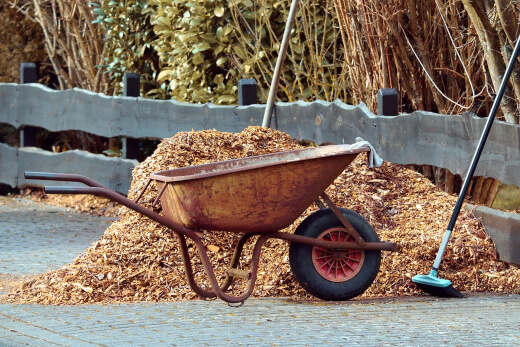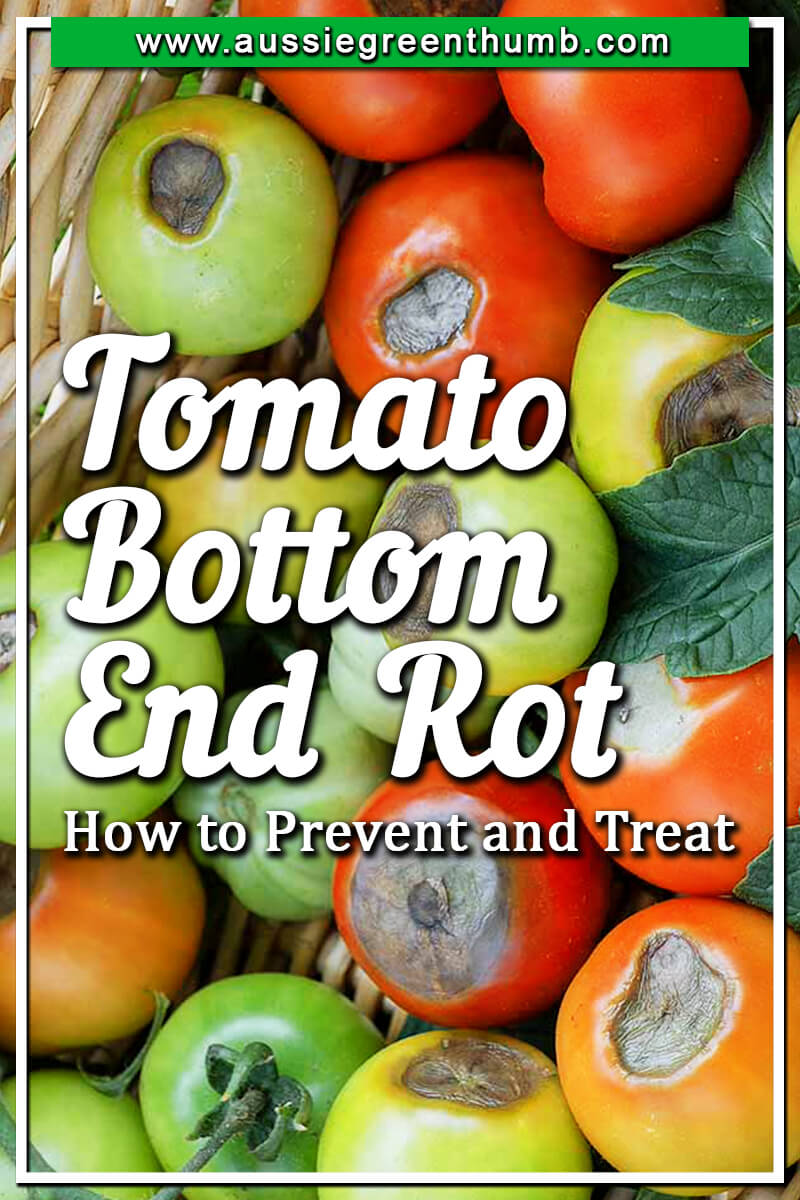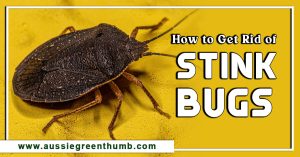Whether you’re calling it tomato blossom end rot or tomato rot, this pesky garden problem can be a real pain when trying to grow fruits and vegetables, like tomatoes, in your garden.
Although not considered a plant disease, it can quickly affect your harvest. Luckily it is preventable, easily identified and absolutely treatable.
More...
Here’s everything you need to know about identifying, treating and preventing and treating tomato rot.
What Does Tomato End Rot Look Like?

Source: gardenerspath.com
Unfortunately, most grower’s won’t know that they have an end rot issue until late into the growing season. You will only begin to notice signs of tomato rot as the fruits of your plant begin to ripen.
You will notice a large, dark bruise-like formation at the base of the fruit, where it will go brown and begin to rot out.
Plants that are particularly susceptible to bottom end rot include:
- Tomatoes
- Peppers
- Squash
- Cucumbers
- Melon Fruits
- Eggplant
- Watermelon
What Causes Tomato Rot?
The fundamental factor which causes tomato rot is an imbalance of calcium within the plant. It is important to note, however, that it is not necessarily the lack of calcium within the soil, but rather an inability of the plant to be able to absorb calcium.
While mostly a result of over-watering, your plant’s absorption inability may be due to:
- Soil PH Fluctuations
- Excess Nitrogen
- Root Damage
- Incorrect Soil PH
- Particularly Cold Soil
- Salty Soil
Any of the above-mentioned factors can be a contributing element as to why your fruit or vegetable plants may fall victim to tomato bottom rot.
Interestingly, end rot appears to happen more in container growing plants than garden plants.
Can You Stop Blossom End Rot Once It’s Started?
Unfortunately, fruits and vegetables with blossom end rot cannot be cured. This is why it is recommended to cut off any infected fruit and dispose of them.
However, with proper treatment you will be able to save your plant and alleviate your tomato rot problem.
If you take action, remove infected fruit and begin to treat the soil, you can fix your tomato rot problem and salvage your plants.
How to Fix Blossom End Rot?

The quickest way to fix your tomato rot problem is to add a generous amount of calcium into the soil to help regenerate the calcium levels within your plant and prevent future issues.
The most common-known way is to add eggshells to your soil. Simply keep all eggshells from your cooking, rinse and let them dry out, then you can crush them in a blender until they make a white powder.
Simply mix this powder in your watering can before watering your plants. Another option is to water your plants with a powdered milk mixture.
This is a super-effective way to give your soil a quick calcium kick and will offer up more calcium than your average eggshell. Simply mix powdered milk to the mix when watering your plants.
Another important factor when treating tomato rot is to ensure regular, consistent watering. You won’t want to leave your soil water-logged but will want to maintain a consistent, controlled level of watering.
Tomato Blossom End Rot Prevention

Of course, the best treatment for tomato rot is prevention and luckily, it’s fairly easy to do.
When it comes to the soil, be sure to maintain levels as much as possible. You’ll want to:
- Maintain Soil Moisture Levels. It is recommended to maintain moisture as deep as 15 cm around the plant. If it is a particularly dry season, water more regularly. If it is particularly humid or wet, avoid over-watering.
- Maintain Soil PH Levels. Aim to keep your soil at a PH level of 6.5 for most garden vegetables and fruits. Here is how to adjust PH in soil.
- Use Only Low-Nitrogen, High-Phosphorous Fertilisers. Phosphorus fertilisers will aid in the absorption of calcium and help maintain your soil. Avoid anything with Nitrogen.
You’ll also want to be weary of over-fertilising as this will impede absorption. - Add Tomato Rot Stop.
Tomato rot stop functions as fertiliser and preventative measure against end rot. Regular application throughout your plants growing cycle will help to maintain calcium absorption.
- Make Sure You Mulch Your Soil. Regularly add mulch to your soil, as much as 5 to 10 cm around the entire base. This will help conserve moisture, prevent weeds and improve your soil.

A great way to make sure you keep your soil at optimum level, is to consider investing in a soil meter or soil test kit.
This will help you to know if your soil is lacking anything and needs some extra additives.
Easy Ways to Add Extra Calcium To Your Soil
Supporting your plants with calcium throughout their cycle is the best way to keep tomato rot away. Did you know there are plenty of everyday products that can help you keep your soil calcium-rich?
Here’s a few things you can use to support your soil:
- Eggshells. As we’ve said, Eggshells are a common go-to when it comes to keeping calcium in your soil. You can either add the blended eggshells to water or even just mix them into the first layers of soil with your garden trowel.
Consider adding eggshells to your soil a few weeks before planting, as it may take up to 6 months for the calcium from the eggshells to be absorbed.
- Epsom Salts. Epsom salts are another handy household item that can enrich your soil and support healthy growing. Be careful, however, not to add too much salt as this will have an adverse effect.
Use 1 tablespoons of Epsom salts to about three litres of water. Apply the mixture to your plants only every other week.
- Coffee Ground & Tea Bags. Keep your old coffee grounds and tea bags to add to the soil around your plants or to add to your mulch. Coffee grounds support absorption and contain several key minerals.
Plus, coffee grounds help to attract worms which support healthy soil. Learn everything you need to know about the benefits and how to use coffee grounds on your garden.
- Banana Peels. Banana peels are high in potassium and phosphorous which are both key minerals for your tomato or vegetable plants. Simply bury banana peels near your growing plants and they will begin to break down and release nutrients to the soil.
My Personal Experience on Tomoto Rot
Watering Problems
This year I decided to grow my tomatoes in a container which is far different from growing in soil. One of the problems of growing anything in containers is they have a tendency to dry out faster than soil does.
Therefore, my plants went from ‘feast to famine’ in their watering schedule as I struggled to find a balance between their needs and my time constraints. Next season, I will try them again in containers but will attach them to the main reticulation line.
Wrong Nitrogen Source
Tomatoes need a nitrate nitrogen source as opposed to any Ammonia based nitrogen. Unaware, I religiously fed my plants every two-weeks with a foliar fish emulsion inadvertently adding to my blossom-end rot woes.
Instead I should have been feeding my tomatoes with animal manures, especially poultry which is high in nitrate nitrogen and very efficient on a weight basis.
Deprived soil
Tomatoes prefer a slightly acidic soil – possibly 6.5pH. My soil was bagged potting mix bought from the cheaper end of the market with the intent to bolster its gumption with some homemade compost. The compost never made its way into this mix, hence the blossom-end rot problems.
I should have definitely added the compost – or bought a superior quality potting mix – and even added some lime to it. This would have enabled the soil to readily adapt to the demanding needs of the tomato crop and calcium wouldn’t have been an issue.
Tomato Rot Frequently Asked Questions
Can overwatering cause blossom end rot?
While tomato end rot is predominately caused by a calcium deficiency in young fruits, other contributors to the issue can be factors like imbalances in soil moisture due to overwatering or drought, high nitrogen fertilisation, and root pruning during cultivation.
Can you stop blossom end rot once it starts?
Unfortunately, tomato rot is not reversible on affected fruits. You will need to remove the affected fruit and work on your plant’s calcium levels for improved growth going forward.
What is the fastest way to add calcium to soil?
Adding lime to your soil in autumn or composting eggshells tend to be the fastest and easiest ways to raise calcium levels in your soil.
What stops blossom end rot on tomatoes?
There are a few simple things you can do to help prevent blossom end rot in your tomato crops. Keep your tomato plants well-watered as needed in your specific area, occasionally add an organic mulch around the base of the plants, avoid over-fertilising, and care for the roots of the plants.
If you can, testing calcium levels regularly and adjusting as needed will also be very beneficial.
Does milk help blossom end rot?
Yes, powdered and non-powdered milk can help boost the calcium content in your soil. Dilute the milk with some water at a 1:1 ratio to help it absorb into the soil properly.
Can hot weather cause blossom end rot?
Excess heat combined with an inadequate supply of water or rainfall can have a large impact on the potential for blossom end rot to occur. Proper irrigation is crucial when managing this disorder both indoors and outdoors.
How do you know if your tomato plant is not getting enough water?
Underwatered tomato plants will quickly become droopy and leggy, often forming other problems like end rot and splitting if left untreated. These plants also tend to show signs of stunted growth and less fruit production.
Can you still eat tomatoes with blossom rot?
Yes. If the tomato is ripe, cut out the dark patch and the rest can be eaten. If the tomato is not ripe, the damage has most likely affected any potential development and the affected fruit will need to be removed.
Summing-Up Tomato Rot Prevention and Treatment
Whichever fruit or vegetable you’re growing, be sure to keep consistent watering and calcium levels to reduce the risk of tomato end rot. Consider treating your soil with eggshells or other high-calcium products before planting.
Should you find brown bruising at the base of your fruits, be sure to remove infected fruit and begin treating your soil immediately to stop further spread.
Follow these handy tips to keep tomato blossom end rot away and enjoy many delicious and fruitful harvests.

Published on January 7, 2023 by Gary Clarke
Last Updated on December 15, 2023




